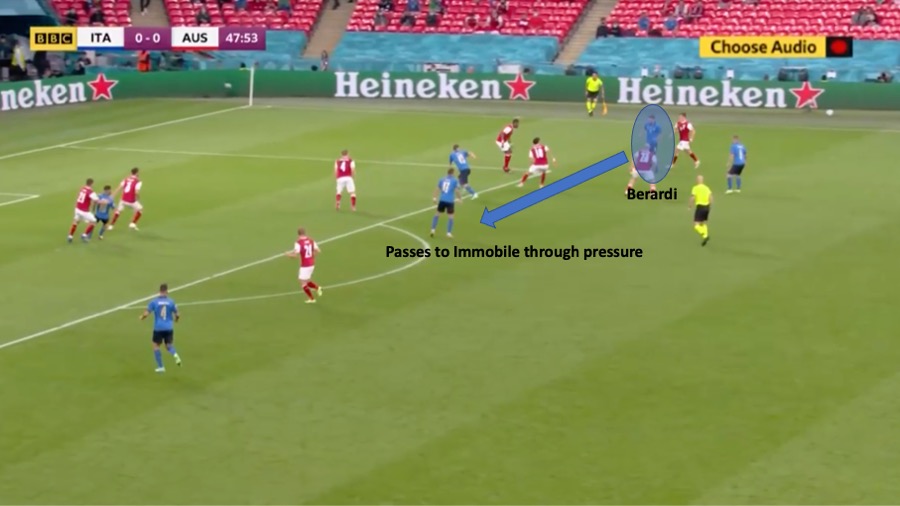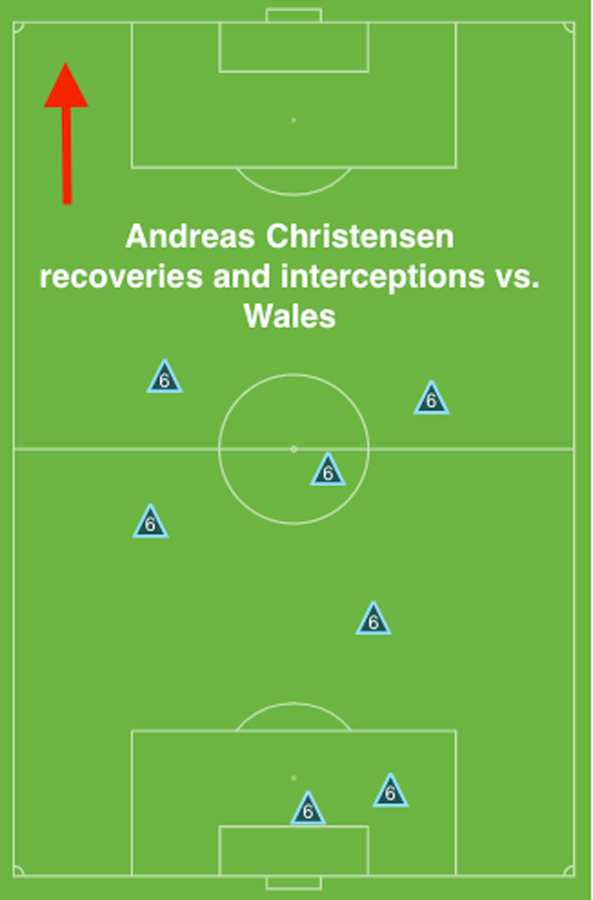How about that for a start to the knockout stages?
The round of 16 at Euro 2020 did not disappoint. There was upsets, drama, penalty shootouts, extra-time heroics and everything else imaginable. On top of all that, fans were treated to an astounding 28 goals across the eight games. Not bad for a stage of a tournament where matches tend to become cagey.
Now the focus shifts to the quarterfinals, which kick off on Friday. Could we see a Cinderella run to the final, or will the favourites ultimately triumph?
Here is one key for every quarterfinal at Euro 2020.
Switzerland vs. Spain: The Swiss pace and height
Unlike Croatia, Switzerland possesses the speed to threaten Spain on the counter. Considering the Croatians still caused fits for the Spanish in the round of 16 despite their lack of pace, that’s an area of concern for the Spanish.
When Spain had possession, both full-backs pushed forward with a midfielder – Pedri on the left and Sergio Busquets on the right – covering for them. Xherdan Shaqiri and Breel Embolo can therefore exploit the open space centrally whenever Spain are overloading the flanks. Mario Gavranovic shadowed into those channels to score Switzerland’s equalizer to force extra time against France.

Switzerland’s height is also a useful weapon on set pieces or via crosses. Two of the Swiss goals were scored via headers, so Spain needs to be on high alert.
Belgium vs. Italy: Domenico Berardi
Italy’s left flank, mainly Leonardo Spinazzola and Lorenzo Insigne, where the key to the team’s round-of-16 clash with Austria, and it proved decisive as the Azzurri overcame a feisty Austrian side to win 2-1 after extra time.
But there’s an attacker flying under the radar on the opposite flank. Domenico Berardi hasn’t received the same plaudits as other teammates, but he’s been quietly effective all tournament long. Only Marco Verratti (8) has created more chances in open play than Berardi’s seven, with an expected assists (xA) total of 1.16, per Opta. His 24 shot-ending sequence involvements is level with Insigne, too.
This is topical because Berardi will be up against the ultra-attacking Thorgan Hazard at left wingback and a slower, error-prone Jan Vertonghen at centre-back. He can maneuver through tight spaces and create chances with his dribbling, but he might be a handful for Belgium’s defence.

Czech Republic vs. Denmark: Christensen’s role
The battle of the Cinderella stories will be played on Saturday as one of the Czech Republic or Denmark will book its spot in the semifinals.
Most of their starting lineups are predetermined, apart from one player: Andreas Christensen.
Christensen started against Wales in the round of 16 in a back three. But with Wales gaining a foothold on the game, the defender pushed into the midfield to help Denmark seize possession and, ultimately, control for the rest of the match. The Chelsea centre-back finished the match with two interceptions, three recoveries and two clearances.

His ability to break up attacks allowed Pierre-Emile Hojbjerg to then dictate the tempo of the game, leading to Denmark’s resounding victory. If the Danes find themselves in a spot of bother again, expect a similar tactical tweak to solve that issue.
Ukraine vs. England: The left side
Jack Grealish’s substitution may have swung the momentum of England’s round-of-16 victory over Germany, but it also highlighted Luke Shaw’s quality in the final third.
Shaw’s cross created Raheem Sterling’s opener against Germany and he was a constant threat whenever he meandered into the final third.
The problem for England is Ukraine’s proficiency on that same flank. Oleksandr Zinchenko (No. 17), Mykola Matvyenko (No. 22) and Mykola Shaparenko (No. 10) created a lethal triangle on that side which might exploit the English whenever they burst forward.

Given the reliance on this side of the pitch from both teams, whoever grabs hold of the match could end up exploiting that flank and secure the victory.
UEFA Euro 2020 quarterfinals: One key to every match - Sportsnet.ca
Read More

No comments:
Post a Comment